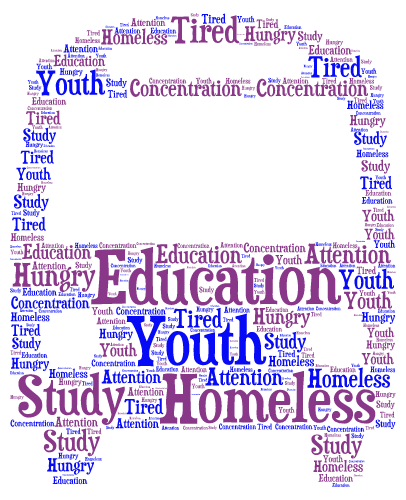 How do you get an education if you are homeless? High school for homeless breaking the cycle of addiction and poverty
How do you get an education if you are homeless? High school for homeless breaking the cycle of addiction and poverty
An article from the Sydney Morning Herald caught my attention “Concentrating on trigonometry can be a struggle for any teenager, let alone those with young children, drug addictions and no bed to go home to. That is the type of immense adversity the students at Key College in Redfern Australia commonly face.”
It is a problem that affects one million students in the US according to the website Scholastic.
According to the British website Shelter 75,000 young people are homeless in Great Britain. They are on the streets, sofa-surfing, or in sheltered accommodation.
The Scholastic article put a face on the problem and what a successful educational program can look like.
When skepticism is a compliment
“The school secretary couldn’t believe the student was homeless. He had new Nike sneakers, carried a cell phone, and looked like any other high school student. That’s because Beth McCullough was doing her job.
“McCullough is the homeless education coordinator for Adrian Public Schools in southeastern Michigan. Through a local service organization, she was able to get a pair of size-13 shoes for the boy. She gave him a prepaid phone for safety, since he was sleeping in an abandoned building. And every morning, McCullough made sure the locker room was open early and stocked with a clean towel and shampoo so he could shower.
If you have a good homeless program, you shouldn’t be able to tell who is homeless by the way they look,” says McCullough. She takes the secretary’s skepticism as “a compliment.”
The law and the reality
The Scholastic article continues, In 1987, the US federal government enacted the Mckinney-Vento Act, which requires that every school district provide homeless students with equal access to public education. Districts need to count homeless students and have a homeless liaison to serve their needs.
Homeless students, as defined by the law, include those who are staying in a hotel/motel or shelter, are unsheltered, or are “doubled up” with friends or family. Being doubled up is the most common, accounting for 71 percent of homeless students in the 2009-10 school year.
“The McKinney-Vento Act is supposed to count kids and do everything to help them succeed, but schools are strapped for resources,” says Ellen Bassuk, founder of the National Center on Family Homelessness (NCFH) in Needham, Massachusetts. “It’s not about intention; it’s about resources. Some schools have better resources than others.”
A successful program in Australia
The Sydney article continues with how one program helps them beat the odds.
But, against the odds, the small school for homeless young people has helped dozens complete year 10, with former students now working as teachers, mechanics, horticulturists and youth workers.
Its effective and unorthodox methods are highlighted in a major report on flexible learning, released on Friday.
Each year about 30 students are referred to the school, mostly from homeless refuges, and offered a one year individual learning program. Last year, 10 maintained enrolment for the whole year.
Of the school’s eight current students, one is in prison, seven have drug and alcohol problems, two have children and another has one on the way.
The students call it “the happy place” and, when asked why they show up each day, most explain that the school is family.
Education has proven to be one of the most powerful antidotes to the cycles of abuse and poverty.
A two-year national study by The Victoria Institute, launched on Friday, found there are over 900 flexible learning programs in Australia, educating more than 70,000 students each year, most of whom are at risk of dropping out of school early.
The researcher, Associate Professor Kitty te Riele, explains that enabling young people to finish high school pays both personal and economic dividends.







0 Comments